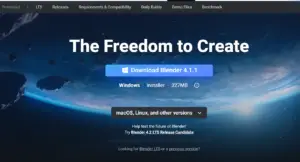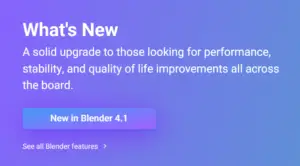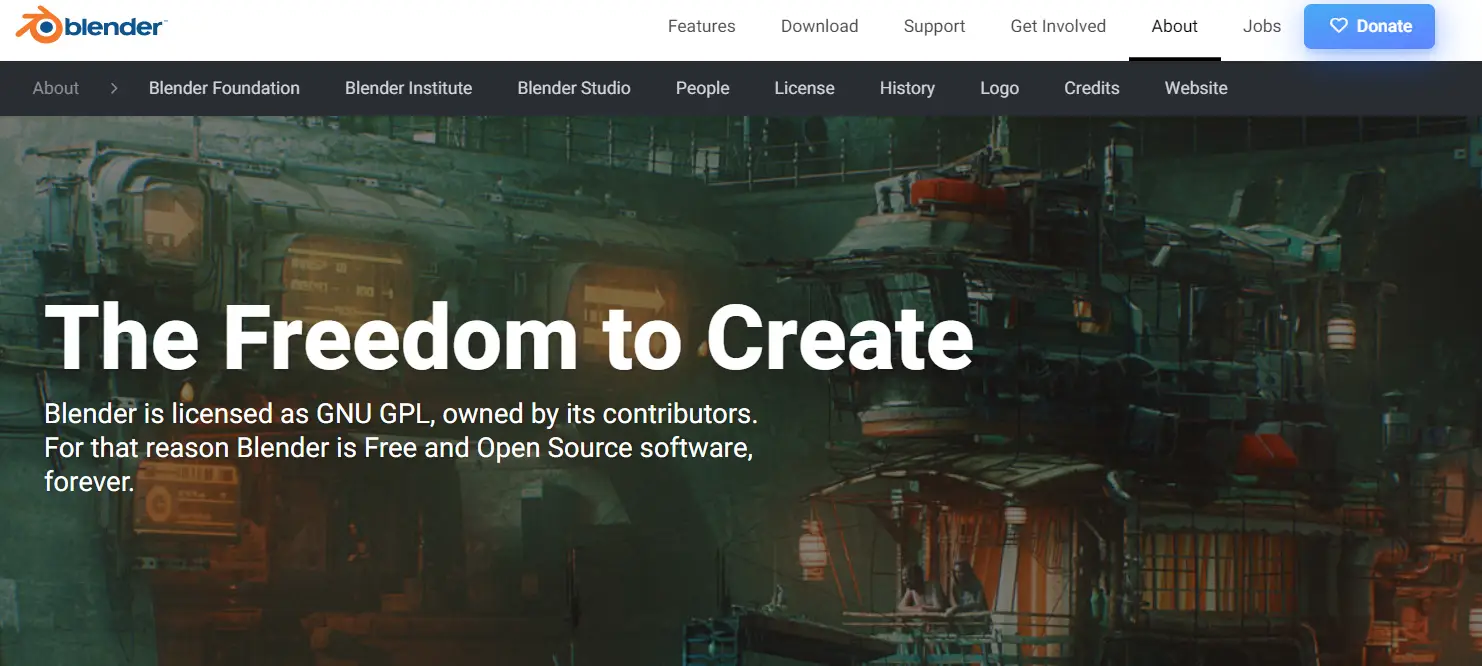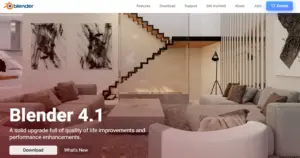Blender: The Ultimate Guide for Beginners
Blender is a powerful, open-source 3D creation suite widely used in animation, visual effects, art, 3D printing, and more. Its extensive features and robust capabilities have made it a favorite among artists, filmmakers, and designers. This comprehensive guide will walk you through everything you need to know about Blender, from its features and installation to tips and tricks for making the most out of this incredible software.

What is Blender?
Blender is a free and open-source 3D creation suite that supports the entirety of the 3D pipeline. Sure, here is the revised text:
This includes modeling, rigging, animation, simulation, rendering, compositing, motion tracking, video editing, and game creation. Blender is maintained by the Blender Foundation, and its development is driven by a community of volunteers and professionals from around the world.
Key Features of Blender
- 3D modeling: Tools for creating and editing 3D meshes, including sculpting, texturing, and UV mapping.
- Animation: Keyframe animation, character rigging, and non-linear animation tools.
- Rendering: High-quality rendering engines like Cycles and Eevee for realistic and real-time rendering.
- Simulation: Physics-based simulations for cloth, fluid, smoke, fire, and particles.
- Video Editing: A built-in video editor for editing videos and adding effects.
- Compositing: Node-based compositing tools for post-processing renders.
- Scripting: Python scripting for customization and automation.
Getting Started with Blender
Download and Installation

- Visit the Website: Go to the Blender website (https://www.blender.org).
- Download: Click on the “Download Blender” button and choose the version for your operating system (Windows, macOS, or Linux).
- Install: Follow the installation instructions to install Blender on your computer.
Setting Up Your First Project
- Launch Blender: Open the software and create a new project.
- User Interface: Familiarize yourself with Blender’s interface, which includes the 3D viewport, timeline, properties panel, and Outline.
- Preferences: Adjust your user preferences by going to Edit > Preferences. Here, you can customize the interface, input settings, and add-ons.
The Interface
Blender’s interface is divided into several key sections:
- 3D Viewport: The main area where you create and manipulate 3D objects.
- Outlier: A hierarchical view of all objects in your scene.
- Properties Panel: Contains settings for materials, textures, modifiers, and more.
- Timeline: Used for animation and keyframe management.
- Toolbar: Contains tools for transforming and editing objects.
Basic 3D Modeling in Blender
Creating and Manipulating Objects
- Add Objects: Press Shift + A to add objects like meshes, lights, and cameras.
- Transform Objects: Use the Move (G), Rotate (R), and Scale (S) tools to manipulate objects in the 3D viewport.
- Edit Mode: Switch to Edit Mode (Tab) to edit the vertices, edges, and faces of a mesh.
Modeling Tools
- Extrude: Use the Extrude tool (E) to extend a face or edge, creating new geometry.
- Loop Cut: Use the Loop Cut tool (Ctrl + R) to add new edge loops to your mesh.
- Bevel: Use the Bevel tool (Ctrl + B) to round off edges and corners.
Sculpting
- Sculpt Mode: Switch to Sculpt Mode to use sculpting brushes for more organic shapes.
- Brush Settings: Adjust brush settings like size, strength, and texture for detailed sculpting.
Texturing and UV Mapping
- UV Unwrapping: Unwrap your 3D model’s UVs to prepare it for texturing.
- Textures: Apply textures to your model using image maps or procedural textures.
- Materials: Create and assign materials to control the appearance of your model’s surface.
Animation in Blender

Keyframe Animation
- Insert Keyframes: Press I to insert keyframes for properties like location, rotation, and scale.
- Graph Editor: Use the Graph Editor to fine-tune your animation curves.
- Dopesheet: The Dopesheet provides an overview of all keyframes in your scene.
Character Rigging
- Armatures: Add armatures (skeletons) to your character for rigging.
- Weight Painting: Use weight painting to control how the mesh deforms with the armature.
- Inverse Kinematics: Set up inverse kinematics (IK) for more natural and complex movements.
Non-Linear Animation
- Action Editor: Use the Action Editor to create and manage individual animation actions.
- NLA Editor: The Non-Linear Animation (NLA) Editor allows you to blend and combine different actions.
Rendering in Blender
Cycles and Eevee
- Cycles: A path-tracing engine for high-quality, photorealistic rendering.
- Eevee: A real-time rendering engine for fast, interactive previews and final renders.
Lighting and Shading
- Lights: Add and configure lights in your scene for the desired effect.
- Shaders: Create shaders using the Shader Editor to define the material properties.
Rendering Settings
- Output Settings: Configure the resolution, frame rate, and output format.
- Render Settings: Adjust settings for sampling, light paths, and performance optimization.
Compositing and Post-Processing
Node-Based Compositing
- Compositor: Use the Compositor to combine and adjust render passes.
- Nodes: Create a node tree for compositing, using nodes like blur, color correction, and alpha over.
Adding Effects
- VFX: Use visual effects like motion tracking and green screen keying.
- Post-Processing: Apply post-processing effects like lens flares, depth of field, and motion blur.
Video Editing in Blender
Video Sequence Editor (VSE)
- Import Media: Import video, audio, and image files into the Video Sequence Editor.
- Timeline: Arrange and edit your clips on the timeline.
- Effects: Add transitions, effects, and titles to your video.
Basic Video Editing
- Cutting and Trimming: Use the cut tool to split clips and trim unwanted sections.
- Audio Editing: Adjust audio levels and add sound effects.
- Exporting: Export your final video using the desired settings.
Advanced Blender Features
Simulation
- Physics Simulations: Create realistic simulations for cloth, fluid, smoke, and fire.
- Particles: Use particle systems for effects like rain, dust, and explosions.
Scripting and Customization
- Python Scripting: Write Python scripts to automate tasks and create custom tools.
- Add-ons: Install add-ons to extend Blender’s functionality.
Collaboration and Workflow
- Blender Cloud: Use Blender Cloud for asset management and collaboration.
- Project Management: Organize and manage complex projects with multiple scenes and assets.
Tips and Tricks for Using Blender
- Learn Keyboard Shortcuts: Familiarize yourself with keyboard shortcuts to speed up your workflow.
- Use Reference Materials: Gather reference images and videos to guide your modeling and animation.
- Experiment and Explore: Don’t be afraid to experiment with different tools and techniques to find what works best for you.
- Stay Updated: Keep up with Blender updates and new features to take advantage of the latest improvements.
- Community Resources: Utilize the vast array of tutorials, forums, and communities available online for support and inspiration.
Common Issues and Troubleshooting
Performance Issues
- Optimize Settings: Adjust the viewport and render settings for better performance.
- System Requirements: Ensure your computer meets the minimum system requirements for Blender.
Crashes and Freezes
- Save Frequently: Save your work regularly to prevent data loss.
- Check Add-ons: Disable problematic add-ons that may cause instability.
Conclusion
By following this guide, you’ll be well on your way to mastering Blender and creating stunning 3D content. Remember to explore and experiment with the software’s features, and don’t hesitate to seek out tutorials and resources to enhance your skills further. Happy blending!

